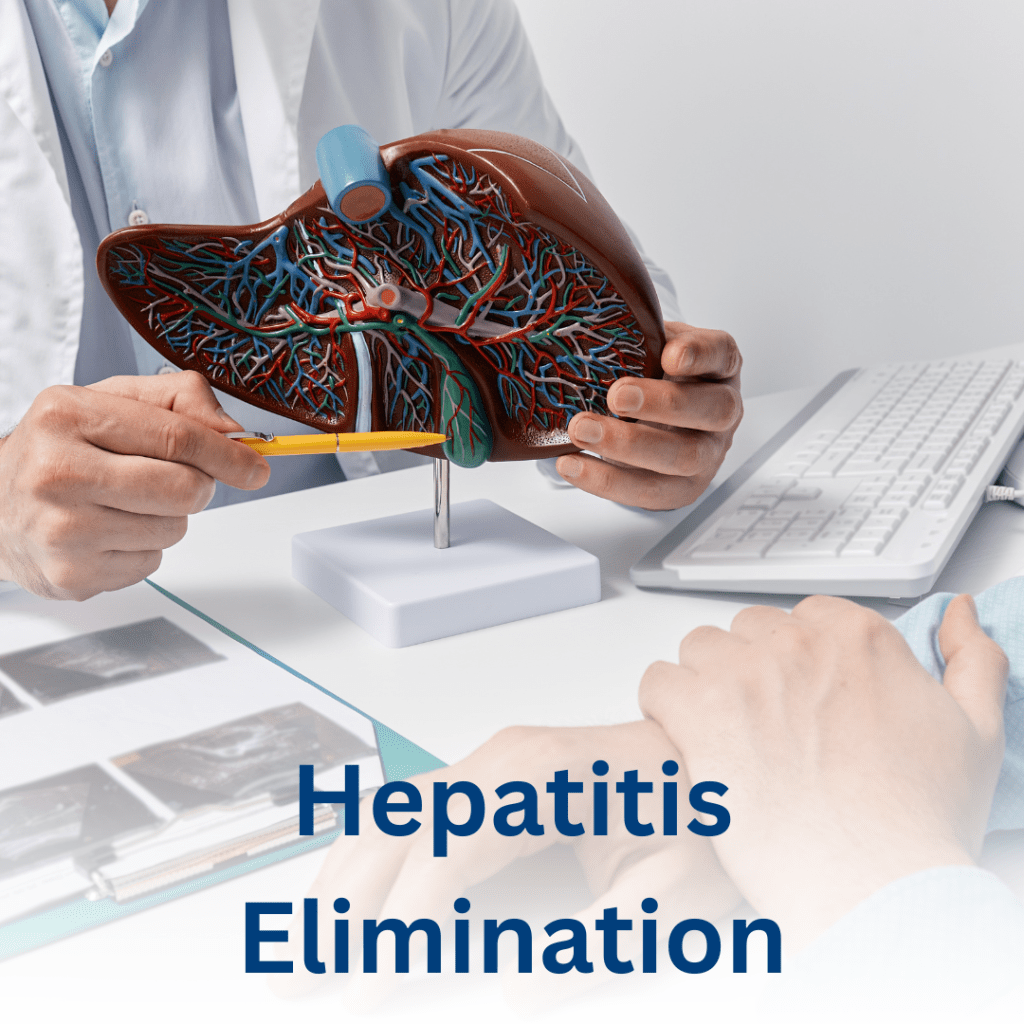
With the global goal of eliminating viral hepatitis by 2030, healthcare systems are at a pivotal crossroads. While World Hepatitis Day brings annual awareness, lasting change hinges on embedding hepatitis B and C prevention into everyday care. Through routine screening, provider education, and culturally responsive outreach, hospitals and clinics can dramatically expand early detection, close care gaps, and reduce transmission.
The global goal to eliminate viral hepatitis as a public health threat by 2030 is ambitious, but attainable. While World Hepatitis Day shines a light on the issue each July, sustainable progress depends on healthcare systems adopting year-round strategies that normalize screening, close gaps in treatment, and empower patients.
Healthcare organizations are uniquely positioned to lead this effort through a comprehensive roadmap built on three pillars: robust screening, provider education, and community outreach.
Expand Routine Screening
Despite clear CDC recommendations for universal hepatitis B and C screening, many healthcare systems still rely on risk-based testing, leaving high-risk patients undiagnosed. Integrated electronic health record (EHR) alerts, standing orders, and point-of-care (POC) testing can shift the paradigm.
A study published in the World Journal of Gastroenterology highlights how simplifying screening protocols and embedding them into standard workflows significantly boosts detection rates, especially in primary care. Same-day oral-fluid assays now allow for real-time diagnosis and linkage to care; a breakthrough for hard-to-reach populations.
Educate and Equip Providers
Provider hesitation and knowledge gaps remain barriers to effective hepatitis care. As outlined in a 2025 study published on ResearchGate, continuing medical education (CME) focused on hepatitis testing guidelines, treatment options, and communication strategies increases clinician confidence and improves adherence to evidence-based care.
Healthcare administrators should invest in scalable training solutions (e-learning modules, clinical decision support tools, and in-service workshops) that keep staff updated on evolving therapies, like direct-acting antivirals (DAAs) for hepatitis C or tenofovir for hepatitis B viral suppression.
Engage the Community
Outreach matters. The 2025 study revealed that patient-centered awareness campaigns combined with mobile testing units dramatically increase engagement, especially in underserved or migrant communities. Collaborations with local organizations, faith-based groups, and schools can expand reach and foster trust.
Multilingual resources, vaccination drives, and targeted education around transmission risks (e.g., perinatal HBV) are especially effective when paired with culturally competent care.
Key Takeaways
- Routine screening saves lives, yet many systems still rely on outdated, risk-based testing. Integrating EHR alerts and point-of-care tools can normalize early detection.
- Investing in provider training improves treatment adherence, especially as hepatitis therapies continue to evolve with options like DAAs and antiviral suppression regimens.
Community outreach is essential for engagement, especially among high-risk or underserved populations, mobile testing units, multilingual education, and local partnerships build trust and access.
FAQs
What are the most effective ways to integrate hepatitis screening into primary care workflows?
To normalize hepatitis B and C testing, providers should use electronic health record (EHR) alerts, implement standing orders, and incorporate point-of-care (POC) testing. These tools allow clinicians to offer screening as part of routine checkups, prenatal visits, or chronic disease management. Embedding prompts directly into visit templates and staff protocols ensures screening becomes a standard, not an exception.How can I stay current on hepatitis treatment guidelines and options?
Continuing medical education (CME) is key. Numerous online platforms now offer accredited modules on hepatitis B and C screening, treatment, and case management. Providers can also access regularly updated clinical guidelines from the CDC, WHO, AASLD (American Association for the Study of Liver Diseases), and the VA. Participation in CME not only updates clinical knowledge but also boosts confidence in applying evolving therapies such as direct-acting antivirals (DAAs) and new HBV regimens.What outreach strategies work best in underserved or high-risk communities?
Community-based care models are highly effective. Mobile clinics, partnerships with local organizations, and multilingual education campaigns build trust and reduce access barriers. Offering rapid testing and linkage-to-care during community events or via peer navigators can significantly increase uptake, especially among migrant, uninsured, or stigmatized populations. Tailoring messaging to reflect cultural norms and using trusted local messengers often drives the greatest engagement.
Each week, we email a summary along with links to our newest articles and resources. From time to time, we also send urgent news updates with important, time-sensitive details.
Please fill out the form to subscribe.
Note: We do not share our email subscriber information and you can unsubscribe at any time.
|
|
Thank you for Signing Up |

Sources
- World Journal of Gastroenterology
Hepatitis C risk assessment, testing and referral for treatment in urban primary care: Role of race and ethnicity
https://pmc.ncbi.nlm.nih.gov/articles/PMC4146870/ - Open Forum Infectious Diseases
Online CME Improves Knowledge, Competence and Confidence in the Management of Hepatitis B among Primary Care Physicians
https://www.researchgate.net/publication/388493905_P-983_Online_CME_Improves_Knowledge_Competence_and_Confidence_in_the_Management_of_Hepatitis_B_among_Primary_Care_Physicians - World Journal of Virology
Advances in treatment of hepatitis delta virus infection: Update on novel investigational drugs
https://pmc.ncbi.nlm.nih.gov/articles/PMC12188869/ - Modern American Journal of Medical and Health Sciences
COMPLEX TREATMENT OF PATIENTS WITH CHRONIC VIRAL HEPATITIS C
https://usajournals.org/index.php/1/article/view/564
Previous Articles
Partner with BHM Healthcare Solutions
With over 20 years in the industry, BHM Healthcare Solutions is committed to providing consulting and review services that help streamline clinical, financial, and operational processes to improve care delivery and organizational performance.
We bring the expertise, strategy, and capacity that healthcare organizations need to navigate today’s challenges – so they can focus on helping others.
Are you ready to make the shift to a more effective process?
